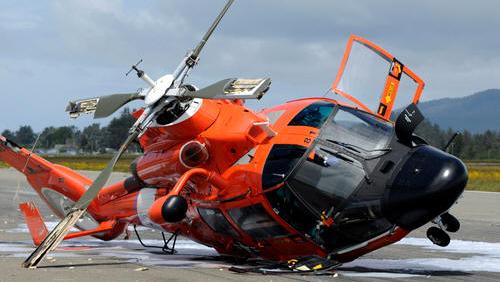 |
|
|
|
|
|
|||
|
By Jim Douglas |
||||
 |
April 30, 2010 -
Three Coast Guard aviators are safe after a Coast Guard helicopter from
Air Station Humboldt Bay crashed at The crewmembers were uninjured. The MH-65C Dolphin helicopter crew was conducting a training mission at the time of the incident. All three aviators walked away from the incident and were examined by emergency medical personnel at the air station. None of the crew sustained serious injuries. |
|||
|
|
||||
|
The HH-65 Dolphin is a twin-engine, single main rotor, MEDEVAC-capable, Search and Rescue (SAR) helicopter operated by the United States Coast Guard (USCG). It is a variant of the French-built Eurocopter Dauphin. The HH-65 Dolphin is used for homeland security patrols, cargo, drug interdiction, ice breaking, military readiness, pollution control, and search and rescue missions. The HH-65 is known for its Fenestron tail rotor and its autopilot capabilities, which can complete an unaided approach to the water and bring the aircraft into a stable 50 ft (15 m) hover, or automatically fly search patterns, an ability which allows the crew to engage in other tasks. The HH-65A's minimum equipment requirements exceeded anything previously packaged into one helicopter weighing in at less than 10,000 pounds. 75% of the HH-65's structure — including rotor head, rotor blades and fuselage — consists of corrosion-resistant composite materials. Some Coast Guard pilots have nicknamed the Dolphin as "Tupperwolf", a portmanteau of tupperware (because of the aircraft's high composites content) and Airwolf (from the 1980s TV series). |
||||

